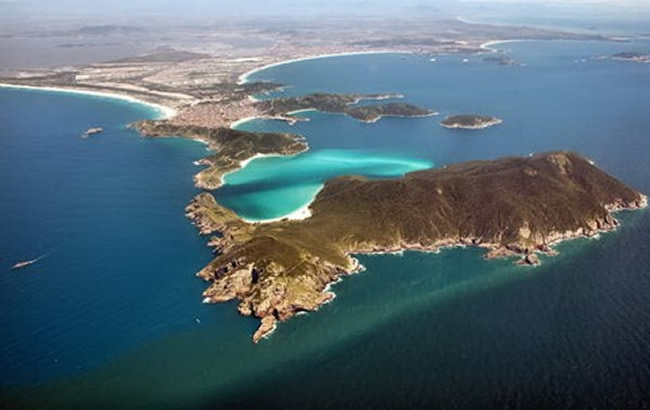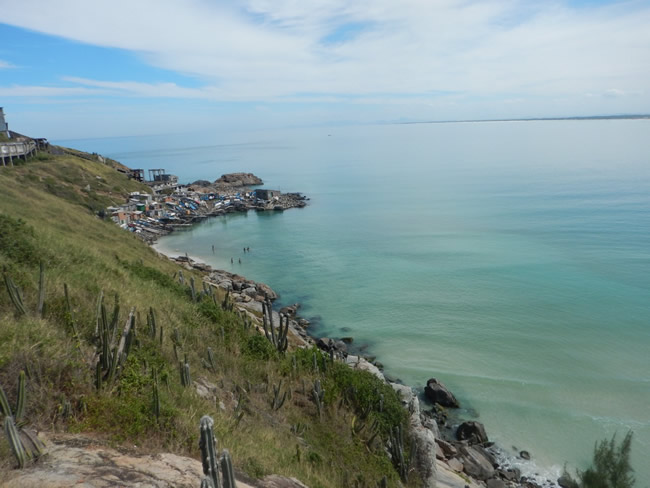|
Cenários de múltiplos distúrbios (antrópicos e climáticos) em ambientes costeiros: processos, gestão e
conscientização
FAPERJ, Rio de Janeiro
Ambientes costeiros estão entre os mais produtivos do planeta, porém, visto que mais de 60% da população
mundial habita estas áreas, essas vêm sofrendo mais intensamente com os impactos antrópicos. Identificar a
origem e efeitos de impactos antropogênico e climáticos, bem como possíveis sinergismos de ambos, ainda é
necessário de modo a implementar estratégias prioritárias para minimizar as consequências, bem como de
implementar regras de manejo e conservação. Arraial do Cabo (AC), localizado na costa sudeste do Brasil, é
reconhecidamente um hotspot de biodiversidade por reunir organismos de origens tanto tropicais quanto
temperados, lado a lado num gradiente de temperatura influenciado por eventos locais de ressurgência,
fenômeno único na costa do Brasil. A região agrega ainda aspectos sociais importantes relacionados à pesca e
ao turismo marítimo intenso, e por estes aspectos, desde 1997 tem status de unidade de conservação de uso
sustentável. A Baia da Guanabara (BG), no entanto é uma das mais importantes baias da costa do Brasil, em
termos tanto de extensão, mas também de indicadores de estressores antropogênicos. Se por um lado a BG tem
as suas margens um alto índice de urbanização, gerando uma grande quantidade de resíduos industriais e
domésticos, bem como do setor agroindustrial, o sistema como um todo sustenta uma atividade pesqueira
intensa, tendo ainda 40§ dos mangues com floresta original. Na região de AC, os estudos realizados pela equipe
proponente deste projeto nas últimas décadas mostraram que o ambiente também já tem níveis altos de
degradação e perdas significativas no provimento de serviços ecossistêmicos devido à falta de manejo e
iniciativas de conservação. Para entender como os impactos antrópicos afetam os componentes da
biodiversidade local e analisar possíveis efeitos de mudanças climáticas que atuam em sinergia sobre processos
ecológicos chaves nos ecossistemas recifais de Arraial do Cabo, reunindo laboratórios de excelência.
Multiple disturbances scenarios (anthropic and climatic) in coastal environments: processes,
management and awareness
FAPERJ, Rio de Janeiro State Research Foundation
Coastal environments are among the most productive on the planet, however, as more than 60§ of the world´s
population inhabits these areas, they have been suffering more intensely from human impacts. Identifying the origin
and effects of anthropogenic and climatic impacts, as well as possible synergisms of both, is still necessary in
order to implement priority strategies to minimize the consequences, as well as to implement management and
conservation rules. Arraial do Cabo (AC), located on the southeast coast of Brazil, is recognized as a biodiversity
hotspot for bringing together organisms of both tropical and temperate origins side by side in a temperature
gradient influenced by local upwelling events, a unique phenomenon on the Brazilian coast. The region also
aggregates important social aspects related to fishing and intense maritime tourism, and for these aspects, since
1997 it has the status of a sustainable use conservation unit. The Guanabara Bay (BG), however, is one of the most
important bays on the coast of Brazil, in terms of both extension and indicators of anthropogenic stressors. If, on the
one hand, BG has a high urbanization rate on its margins, generating large amount of industrial and domestic
waste, as well as from the agro-industrial sector, the system as a whole supports an intense fishing activity, with 40
§ of the mangroves still with its original forest. In the region of AC, studies carried out by the team in recent decades
have shown that the environment already has high levels of degradation and significant losses in the provision of
ecosystem services due to the lack of management and conservation initiatives. To understand how anthropogenic
impacts affect the components of local biodiversity and analyze possible effects of climate change that act in
synergy on key ecological processes in the reef ecosystems of Arraial do Cabo, this proposal brings together
professionals of excellence to assess multiple impacts and disturbances.


|









